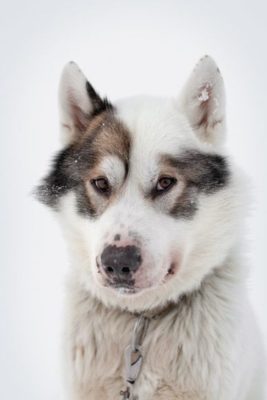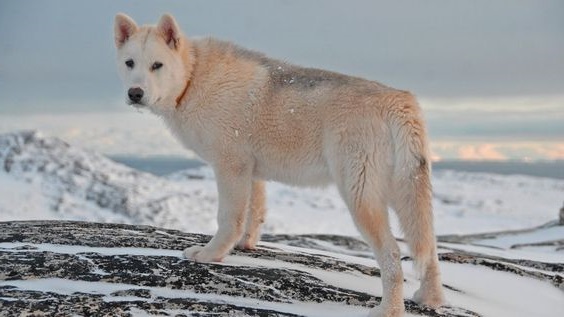Greenland Dog

In general, the Greenland Dog is brilliant, but it is very individual. These dogs are not recommended for novice dog owners because they tend to have some independence and require a lot of attention and training. The breed is calm but can go into a frenzy unexpectedly. These dogs are also affectionate when bonding with their owners, but they need a firm hand to prevent problem behavior development and show authority.
Table of Contents
Breed Information
| Another Name | Kalaallit qimmiat (Qimmeq), Grønlandshund, Grünlandshund, Esquimaux Dog |
| Origin | Greenland |
| Height | Males from 60 cm Females from 55 cm |
| Weight | About 30 kg |
| Fur | Medium length, dense |
| Color | Black, gray, or mixed, excluding albinos |
| Lifespan | 12-14 years |
| FCI Classification | Spitz and primitive types |
| Group | Hunting dogs, apartment dogs, dogs for kids, sled dogs |
| Price | $1000-4000 |
Breed Photos
Origin History
The exact origin of the Greenland Dog is unknown because it is considered an ancient breed. However, it is believed that these dogs’ origin dates back to the old Siberian peoples who traveled through the Arctic region thousands of years ago.
Representatives of the breed are quite strong and hardy, so they were in demand by tradespeople and hunters. This breed evolved evolutionarily in an area where there are severe frost and snow for most of the year and sometimes all year. Power, endurance, and a thick coat were the only helpers of these dogs.
It is said that the first Greenland Dogs came to Britain in the eighteenth century, and on July 29, 1875, they already took part in one of the first dog shows. The English Kennel Club officially recognized the Greenlandic sled dog breed in 1880. Also, these dogs were in demand for expeditions. Researchers call this breed the main helper in the hard life of the aborigines.
Appearance
The Greenland Dog is a very hardy and robust breed. They have small triangular ears and a strong, broad, wedge-shaped head. The jaws are mighty. The breed has a large, fluffy tail that is tucked over the dog’s back and protects the dog from the cold while it sleeps. The legs are well pubescent, and the toes are covered in thick tufts with large pads. The Greenlandic husky has a double coat of medium length. The pile color can be varied, except for albino. The undercoat is short, dense, and the pile is stiff, long with a water-repellent effect.
Character
In general, the Greenland Dog is brilliant, but it is very individual. These dogs are not recommended for novice dog owners because they tend to have some independence and require a lot of attention and training. The breed is calm but can go into a frenzy unexpectedly. These dogs are also affectionate when bonding with their owners, but they need a firm hand to prevent problem behavior development and show authority.
Care
Greenland Dogs do not need a lot of grooming, but twice a year, namely during the spring and fall, they shed a lot. Therefore, it is worth combing out the hair from time to time, which will minimize hair loss. Greenlandic huskies should be washed as seldom as possible, as hair follicles are covered with a special oil that prevents dryness and irritation of the animal’s skin.
Training
Training a Greenland Dog is a very time-consuming and complicated process. It is advisable to entrust this task to a qualified specialist. It is an intelligent breed, but they are not ready to blindly obey their master. For the dog to be obedient – show your authority. Only the leader influences these dogs. If they sense your weakness or insecurity, they’ll try to take over immediately. While they are being trained, do not yell at them or hit them. It is worth being patient and persistent.
Common Diseases
Centuries of natural selection under such harsh living conditions have resulted in the breed having virtually no hereditary diseases. Very rarely do Greenlandic dogs suffer from diabetes, hip dysplasia, or a predisposition to stomach congestion.
Nutrition
The amount of food for a Greenland Dog should directly depend on the energy expenditures of the husky. The food should be mostly rich in animal proteins (meat, eggs, fish, cottage cheese, or by-products). Carbohydrates are bad for the breed’s digestion. Unlike other dogs, Greenlanders are allowed fatty foods, especially during high activity periods. They have a protein-fat metabolism, indicating that fats rather than carbohydrates are the primary source of energy. With this diet, the sled dog’s body will suffer from vitamin deficiencies, so be sure to include vitamin and mineral complexes in your pet’s diet.
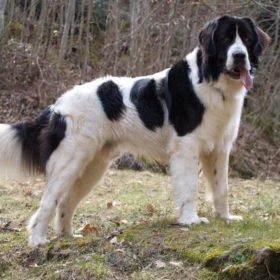 Landseer
Landseer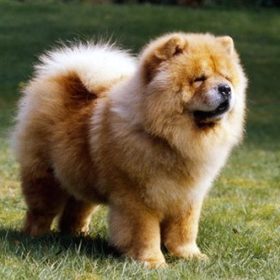 Chow Chow
Chow Chow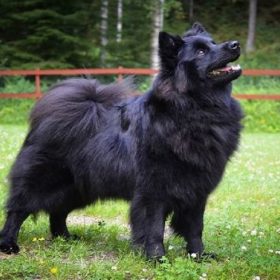 Swedish Lapphund
Swedish Lapphund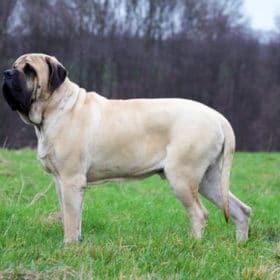 English Mastiff
English Mastiff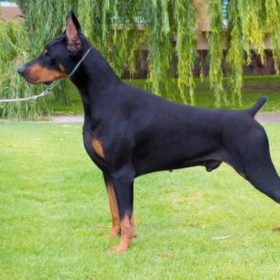 Dobermann
Dobermann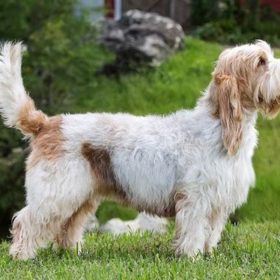 Grand Basset Griffon Vendéen
Grand Basset Griffon Vendéen